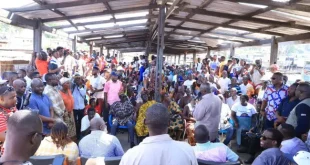According to data from the Ghana Statistical Services (GSS), of the 11.39 million Ghanaians working as of the third quarter of 2023, 6.44 million were women and 5.52 million were men.
The 2023 Annual Household Income and Expenditure Survey (AHIES) from the GSS indicates that, on average, there has been a greater employment rate among females than males, with the difference being approximately 600,000 for 2022 and 900,000 for 2023.
The unemployment rate for women rose from 17.5 in the second quarter of 2023 to 17.7 in the third quarter, 2023, despite an increase in employment for women.
It stated that between the second and third quarters of 2023, the unemployment rate for men stayed constant at 10.9%.
The survey also indicated that the average unemployment rate for the first three quarters of 2023 was 14.7 per cent.
“The sharp increase in the unemployment rate of females between the fourth quarter of 2022 and the first quarter of 2023 has culminated in a wider unemployment gender gap in 2023 relative to 2022,” the report noted.
The survey also showed that, by the end of the third quarter, the services and sales industry accounted for 41.7% of employed females, while skilled agriculture, forestry, and fisheries accounted for 39.8% of employed males.
“Females had a much lower share of jobs as plant and machine operators or assemblers (averaging 0.3% across the first three quarters of 2023) than males (averaging 11.0% for the same period), the study highlighted,” the study emphasized.
Additionally, it was revealed that a greater proportion of women than men were working in vulnerable occupations; over the course of the seven quarters, this difference has averaged out to be around 20 percentage points.
Towards the end of the third quarter of 2023, 77.8% of working women and 57.7% of working men were in vulnerable employment.
The likelihood of having formal work arrangements, respectable working conditions, sufficient social security, and “voice” through effective representation by trade unions and related organizations is lower among those in vulnerable employment.
Such employment is frequently characterized by low productivity, insufficient pay, and challenging working conditions that compromise employees’ basic rights.
The first high-frequency panel that is nationally representative and offers quarterly labor force data is called AHIES.
It is intended to give disaggregated labor statistics in accordance with national labor force development agendas to support planning and policy.
Source: Ghanatodayonline.com
 Ghanatodayonline.com News, Politics, Health, Education & More
Ghanatodayonline.com News, Politics, Health, Education & More



